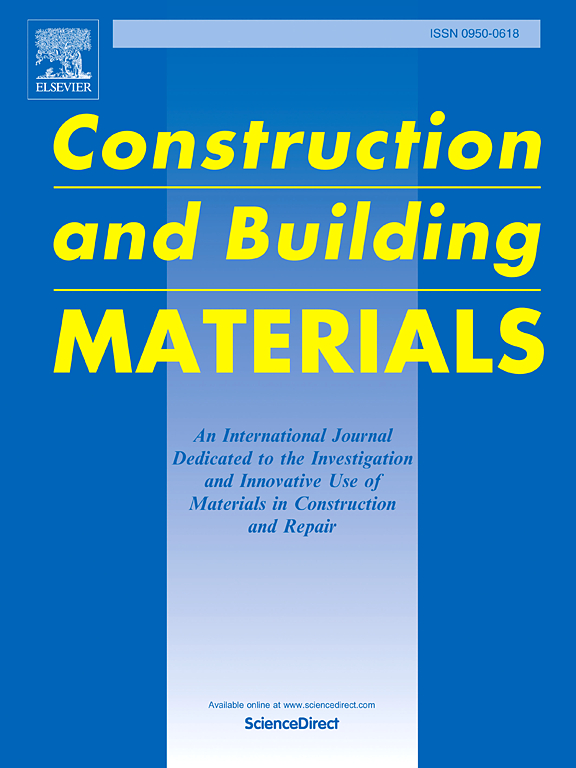Influence of CFRP jackets stiffness on the performance of coal cylinders: 3D PFC- FLAC coupled numerical investigation
IF 7.4
1区 工程技术
Q1 CONSTRUCTION & BUILDING TECHNOLOGY
引用次数: 0
Abstract
Carbon fiber reinforced polymer (CFRP) jacketed coal cylinders represent a potential new material-based method for enhancing the stability of coal pillars in goaf, and CFRP jackets stiffness is the most critical parameter. However, traditional continuum-based numerical models cannot model the meso-mechanics of coal cylinders due to its discrete nature. In this paper, a three-dimensional discrete element method (DEM) and the finite difference method (FDM) coupled numerical modeling scheme was proposed. CFRP jackets is modeled by the continuum method using FLAC3D and the coal cylinders is modeled by the discrete element method using PFC3D. The proposed numerical models are validated using laboratory observations. The influence of CFRP jacket stiffness on the contact force fabric, crack propagation, and characteristic stress of axially compressed coal cylinders were investigated. Numerical results demonstrate that the anisotropy of the normal contact force fabric gradually decreases with the increase in CFRP jacket stiffness. The characteristic stresses (cracking, yielding, and peak) increase significantly as CFRP jacket stiffness enhances, following a positive exponential decay function relationship. The cumulative number of cracks grows in an "S-shaped" Bidoseresp function pattern with increasing axial strain. These findings provide critical references for the application of CFRP jackets in the reinforcement of residual coal pillars in goaf areas.
CFRP夹套刚度对煤筒性能的影响:三维PFC- FLAC耦合数值研究
碳纤维增强聚合物(CFRP)夹套煤筒是一种有潜力的新型材料增强采空区煤柱稳定性的方法,而碳纤维增强聚合物夹套刚度是其中最关键的参数。然而,传统的基于连续体的数值模型由于其离散性而无法模拟煤柱细观力学。提出了一种三维离散元法(DEM)和有限差分法(FDM)耦合的数值模拟方案。采用FLAC3D对CFRP夹套进行连续元法建模,采用PFC3D对煤筒进行离散元法建模。所提出的数值模型通过实验室观测得到了验证。研究了CFRP夹套刚度对轴向压缩煤筒接触力结构、裂纹扩展和特征应力的影响。数值结果表明,随着碳纤维布夹套刚度的增加,织物法向接触力的各向异性逐渐减小。随着CFRP夹套刚度的增加,特征应力(开裂、屈服和峰值)显著增加,服从正指数衰减函数关系。随着轴向应变的增加,裂纹累积数呈“s”型的Bidoseresp函数型增长。研究结果为CFRP夹套在采空区残余煤柱加固中的应用提供了重要参考。
本文章由计算机程序翻译,如有差异,请以英文原文为准。
求助全文
约1分钟内获得全文
求助全文
来源期刊

Construction and Building Materials
工程技术-材料科学:综合
CiteScore
13.80
自引率
21.60%
发文量
3632
审稿时长
82 days
期刊介绍:
Construction and Building Materials offers an international platform for sharing innovative and original research and development in the realm of construction and building materials, along with their practical applications in new projects and repair practices. The journal publishes a diverse array of pioneering research and application papers, detailing laboratory investigations and, to a limited extent, numerical analyses or reports on full-scale projects. Multi-part papers are discouraged.
Additionally, Construction and Building Materials features comprehensive case studies and insightful review articles that contribute to new insights in the field. Our focus is on papers related to construction materials, excluding those on structural engineering, geotechnics, and unbound highway layers. Covered materials and technologies encompass cement, concrete reinforcement, bricks and mortars, additives, corrosion technology, ceramics, timber, steel, polymers, glass fibers, recycled materials, bamboo, rammed earth, non-conventional building materials, bituminous materials, and applications in railway materials.
 求助内容:
求助内容: 应助结果提醒方式:
应助结果提醒方式:


